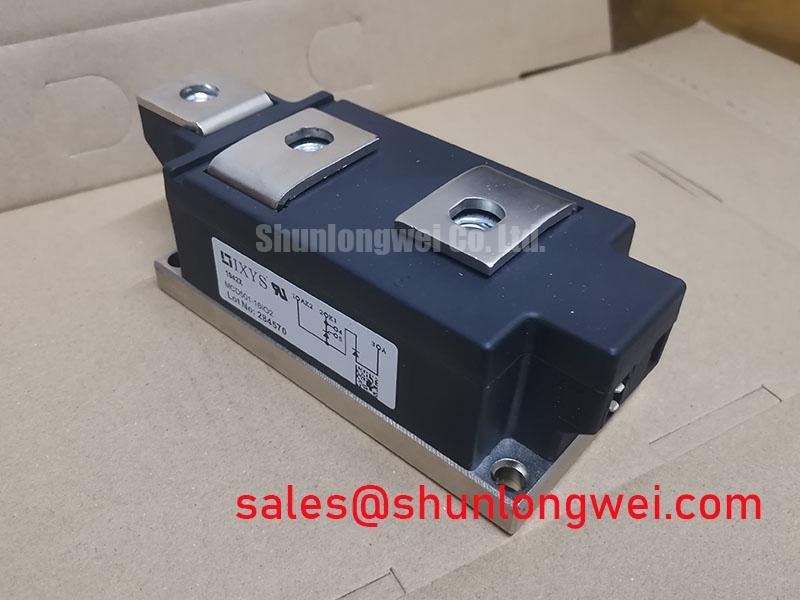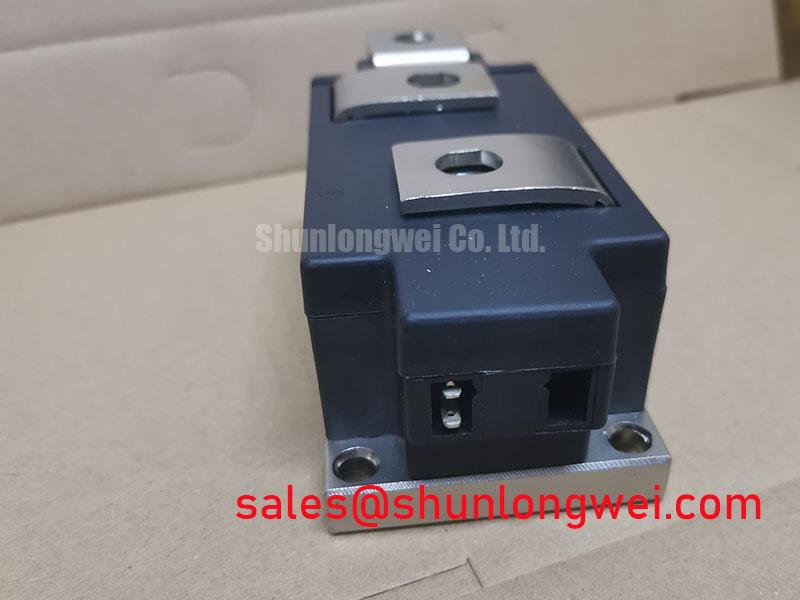Content last revised on November 12, 2025
IXYS MCD501-16IO2 | High-Current Phase Control Thyristor/Diode Module
The IXYS MCD501-16IO2 is a robust thyristor/diode module engineered for high-power, low-frequency applications where precise control and unwavering reliability are paramount. Designed by IXYS, a Littelfuse company renowned for power semiconductor innovation, this module provides a high-performance solution for engineers developing industrial motor drives, controlled rectifiers, and soft-starters. Its architecture focuses on delivering exceptional current handling and thermal stability, making it a cornerstone component for demanding power conversion systems.
Engineering Breakdown: Reliability and Performance
The performance of the MCD501-16IO2 is rooted in several key design choices that directly translate to system-level benefits. Understanding these elements is crucial for any engineer looking to maximize the reliability and efficiency of their design.
- Direct Copper Bonded (DCB) Substrate: At the core of the module's thermal design is an Aluminium Oxide (Al2O3) DCB substrate. This technology creates a direct, robust bond between the semiconductor die and the ceramic insulator, which is then bonded to the copper baseplate. The primary engineering advantage is an extremely low Thermal Resistance (Rth(j-c)). This ensures rapid and efficient heat transfer from the junction to the heatsink, allowing the device to operate at its high rated current of 500A without exceeding thermal limits. For the designer, this means enhanced reliability and potentially smaller, more cost-effective cooling solutions.
- Planar Passivated Chips: The IXYS MCD501-16IO2 utilizes planar passivated silicon chips. Passivation is a critical manufacturing step that protects the semiconductor junction from contaminants, leading to very low off-state leakage currents and stable blocking voltage characteristics over the device's entire operational lifespan. This intrinsic stability is vital in industrial environments where long-term performance is non-negotiable.
- Exceptional Surge Current Capability: With a non-repetitive surge current (I_TSM) rating of 13,000A, this module is built to withstand significant fault conditions. In applications like motor drives, this provides the necessary headroom to handle large inrush currents during startup or locked-rotor events without device failure, significantly improving the ruggedness of the end system.
Core Applications: Where the MCD501-16IO2 Excels
The unique characteristics of this thyristor module make it an ideal choice for specific power control topologies. Unlike high-frequency PWM-driven IGBT modules, the MCD501-16IO2 is optimized for line-frequency phase-angle control.
- AC Motor Soft-Starters: The module's precise phase control allows for smooth voltage ramping to large induction motors, drastically reducing mechanical shock on gearboxes and electrical stress on the power grid.
- Controlled Rectifiers: For battery chargers, welding power supplies, and industrial DC power systems, this module can be configured to create highly reliable and efficient AC-to-DC converters with adjustable output voltage.
- DC Motor Drives: In legacy and specialized DC motor control applications, the MCD501-16IO2 provides the robust power stage needed for speed and torque regulation.
- Static VAR Compensators (SVC): Its ability to control reactive power makes it suitable for power factor correction and grid stabilization equipment.
MCD501-16IO2 Key Electrical & Thermal Specifications
The following table provides a snapshot of the critical parameters for design engineers. For a comprehensive overview, it is recommended to review the official datasheet.
| Parameter | Value |
|---|---|
| Repetitive Peak Off-State/Reverse Voltage (V_DRM, V_RRM) | 1600 V |
| Average On-State Current (I_TAVM @ T_C = 85°C) | 500 A |
| RMS On-State Current (I_TRMS) | 785 A |
| Peak Non-Repetitive Surge Current (I_TSM, 10ms) | 13000 A |
| Threshold Voltage (V_T0) | 0.85 V |
| Slope Resistance (r_T) | 0.40 mΩ |
| Thermal Resistance, Junction to Case (Rth(j-c)) | 0.07 K/W |
| Operating Junction Temperature (T_vj) | -40°C to +125°C |
For complete device characteristics and application notes, you can download the MCD501-16IO2 datasheet here.
Engineer's FAQ
1. What is the fundamental difference between this thyristor module and an IGBT module?
The primary difference lies in their switching control mechanism. The MCD501-16IO2 is a thyristor (or SCR), which is a latching, line-commutated device. It is turned on with a gate current pulse but can only be turned off when the main current flowing through it falls below a "holding current" level—typically at the zero-crossing of an AC waveform. In contrast, an IGBT is a fully-controlled, force-commutated switch. It can be turned on *and* off at any time via its gate voltage, making it suitable for high-frequency Pulse-Width Modulation (PWM). Therefore, this IXYS module is ideal for low-frequency phase control, not high-frequency switching inverters. You can learn more by reading our in-depth analysis of IGBT modules.
2. What are the key mounting and thermal considerations?
Proper thermal management is critical to leveraging the full capability of the MCD501-16IO2. The module's flat copper baseplate is designed for optimal contact with a heatsink. It is essential to use a high-quality thermal interface material (TIM) and apply the specified mounting torque to the terminals to ensure minimal contact resistance and effective heat dissipation. A focus on unlocking thermal performance is key to long-term reliability.
If your application demands robust, high-current phase control with proven industrial reliability, the IXYS MCD501-16IO2 is an exemplary choice. For pricing, availability, or to discuss your specific design requirements, please contact our technical team.












